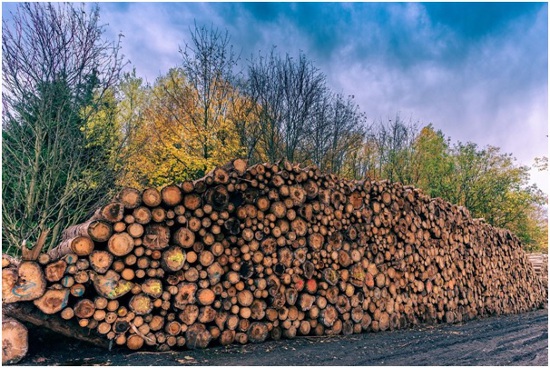Tree removal necessitates careful consideration of safety and environmental factors and strategic financial planning. This guide will reveal tree removal signs, including safe techniques, clean up and disposal, and benefits of professional tree removal services and budgeting.


I. Indicators for Tree Removal
Identifying Tree Diseases:
A clear indication that tree removal is necessary often arises when trees show signs of diseases. Widespread issues such as Dutch Elm disease, Oak Wilt, or Pine Beetle infestations can compromise the stability and safety of trees. Keep an eye out for symptoms like discoloured leaves, irregularities in the bark, or unusual growth patterns.
Hazards Associated with Untreated Diseased Trees:
Neglecting diseased trees has its inherent risks. As their structural stability diminishes, these trees can pose safety hazards. Furthermore, there is the potential for spreading diseases to neighbouring healthy trees, posing a threat to the entire ecosystem. Thus, prompt removal is imperative to mitigate the risk of further harm.
Recognising Potential Hazards from Trees:
Trees with structural concerns, such as large dead branches or leaning trunks, are deemed hazardous. They present a danger to property, individuals, and neighbouring trees. Regularly inspect your trees for indications of decay, deep cracks, or root issues, as these problems may result in unpredicted tree failures.
Safety Risks for Adjacent Structures:
The impact of falling hazardous trees on buildings, vehicles, or power lines can lead to significant damage. Swiftly addressing these concerns is vital to avoid accidents and mitigate the need for costly repairs. A professional assessment is frequently necessary to evaluate the level of risk and develop appropriate plans.
II. Tree Removal Procedure
Site Examination and Risk Evaluation:
Before tree removal, a comprehensive site examination is essential. Tree arborists in Sydney will assess the tree’s health, structural integrity, and proximity to structures and utility lines—the risk evaluation aids in determining the safest method for tree removal.
Securing Requisite Permits:
Tree removal often requires permits in many regions, mainly for protected species. Your selected tree service provider can support you in acquiring the essential permits and ensuring adherence to local regulations.
III. Safe Tree Removal Methods
Tree Felling:
In open spaces, tree felling entails cutting the tree at its base, allowing it to fall in a controlled direction. This technique demands meticulous planning and expertise to avert accidents.
Tree Dismantling:
Tree dismantling offers a safer alternative in confined spaces or proximity to structures. Arborists systematically remove branches and sections of the tree, minimising the risk of damage.
Crane-Assisted Removal:
Crane-assisted removal may be necessary when dealing with tall or large trees in tight spaces. This method ensures precision and minimises potential damage to the surrounding area.
IV. Cleanup and Disposal
Clearing Debris and Recycling:
Following tree removal, the cleanup phase commences. A professional tree removal company will manage the removal and recycling of debris and repurposing of wood chips and logs in an environmentally responsible manner.
Eliminating Stumps through Removal or Grinding:
Leftover stumps can detract from your landscape’s appearance and present tripping hazards. It is often advisable to opt for stump removal or grinding to enhance the overall aesthetics of your outdoor space.
V. Engaging Professional Tree Removal Services (Advantages of Skilled Arborists)
Skill and Experience:
Professional arborists have the skills and experience to assess trees and choose the most suitable removal method accurately. Prioritising safety, they are adept at handling even the most challenging situations.
Equipment and Safety Measures:
The removal of trees demands specialised equipment and safety gear. Professional services come fully prepared with the necessary tools, ensuring a secure and efficient removal process.
How to Select the Ideal Tree Service
When choosing a tree removal service, examine their credentials thoroughly. Confirm that they hold the necessary licenses, are covered by appropriate insurance, and carry certifications from reputable industry organisations. Request references and explore online reviews to assess their reputation.
VI. What Factors Affect Tree Removal Expenses
Tree Size and Species:
The size and species of a tree are pivotal factors influencing the overall removal cost. More giant trees or those with intricate branching structures may necessitate increased labour and specialised equipment.
Accessibility and Location:
The ease of access to the tree and its location on your property can impact removal costs. Trees in challenging, hard-to-reach areas or near structures may demand additional effort and resources.
Emergency versus Non-emergency Removal:
Emergency tree removals often incur higher costs due to the urgency and potential risks. Conversely, non-emergency removals, which can be scheduled in advance, may provide cost-saving opportunities.
VII. Financial Planning for Tree Removal
Seeking Multiple Estimates:
Acquiring quotes from various tree service providers enables a thorough comparison of prices and services. Exercise caution regarding meagre prices, as they may signal substandard service.
Preparing for Unexpected Costs:
Throughout the removal process, unforeseen challenges may emerge. Budgeting for eventualities is crucial to prevent unexpected costs from catching you by surprise.
Wrapping Up
Understanding the critical importance of safe and timely tree removal is paramount for preserving the well-being of your property and the surrounding environment. The swift addressing of diseased or hazardous trees is a matter of safety and a proactive step to prevent accidents and mitigate the risk of further damage. With these budgeting tips and a commitment to responsible tree care, you can safeguard your property and the broader ecosystem.








